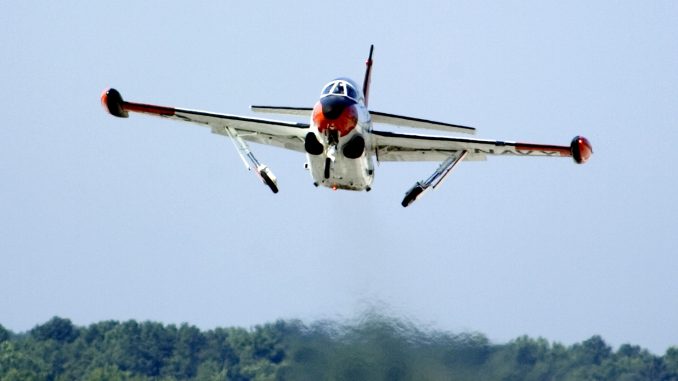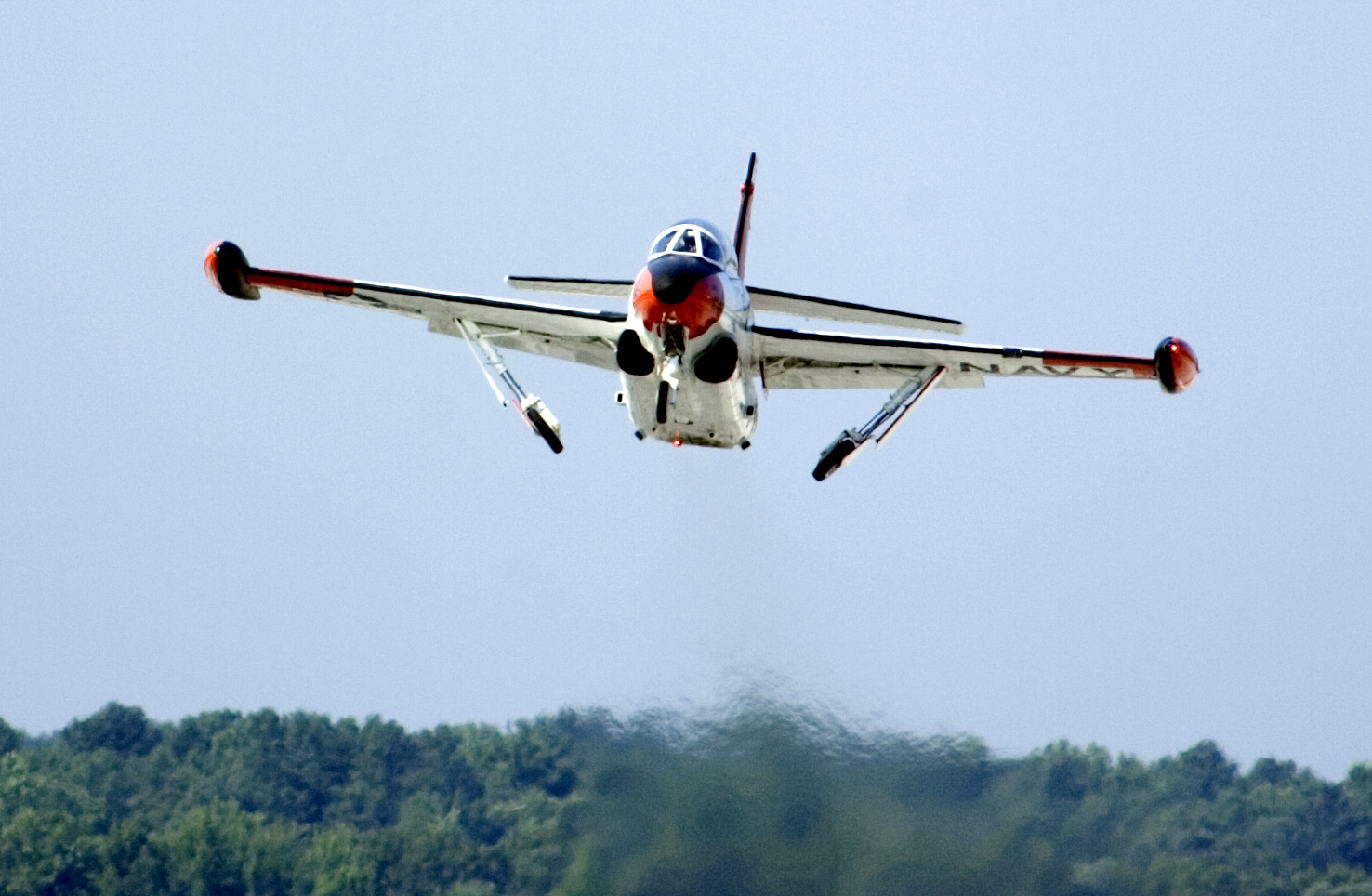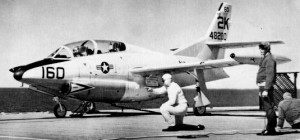

The Navy’s last flying T-2C Buckeye made its final flight at Naval Air Station (NAS) Patuxent River, Maryland, Sept. 25, capping 56 years of the aircraft type’s service to the fleet. Although T-2s were officially retired from service in 2008 with a “sundown” ceremony, Air Test and Evaluation Squadron (VX) 20 at NAS Patuxent River continued to use three Buckeyes as safety chase aircraft during test and evaluation flights of the E-2D Hawkeye, P-8A Poseidon and MQ-4C Triton unmanned aerial system.

Designed in the mid 1950s to use proven technologies wherever possible, it shares its wing with the FJ-1 Fury, one of the Navy’s earliest jet fighters. The tandem cockpit arrangement and slightly elevated rear cockpit gives the instructor good forward visibility over the student. Both cockpits are equipped with zero-level ejection seats. For armament training, the aircraft is equipped with underwing strong points to carry bombs, rockets or gun pods, as well as an arresting hook for carrier landings. Originally designed with a single engine, the T-2C variant, which entered fleet service in 1968, has two. The Buckeye had trained more than 11,000 Navy and Marine Corps student pilots before it was replaced by the T-45 Goshawk.
“The T-2s have been a reliable and valuable part of our squadron for the last seven years, following what was already a distinguished career of training thousands of naval aviators,” said VX-20 Commanding Officer Cmdr. William Selk, who conducted the final flight in aircraft 320, along with retired naval aviator Kent Vandergrift. “We’re sad to see her go, but we’re thankful for all those years of faithful service. The T-2 has earned its place in naval aviation history many times over.”
Aircraft number 320 ended its final flight, Sept. 25, with a total of 13,945 flight hours on record.With the retirement of the T-2, VX-20 is transitioning to the C-38 to serve as chase aircraft, radar test targets and pilot proficiency aircraft.
———————————————————-
The end of US military T-2 Buckeye flight operations as outlined in their official press release above, does not completely bring to an end the type’s flying career. There are still a small number of Buckeyes flying in civilian hands, which sometimes make appearances on the air show circuit. Of these, the following three examples are known to have flown in recent years.
T-2B Bu.155226 with Dr. Richard Sugden in Wilson, Wyoming
T-2B Bu.155235 with the Warbird Heritage Foundation in Lake Forest, Illinois
T-2C Bu.158313 with Duane Doyle in Castro Valley, California
The T-2 Buckeye also saw military service with Venezuela and Greece. While Venezuela retired their fleet in 1999, the Hellenic Air Force still have about 30 or so T-2Es and a handful of T-2Cs on the books, although they are currently looking to replace them. Given the long term economic hardships being endured in Greece currently, it seems likely that they will have to soldier on with he Buckeyes for some time to come.

Be the first to comment
Graphic Design, Branding and Aviation Art